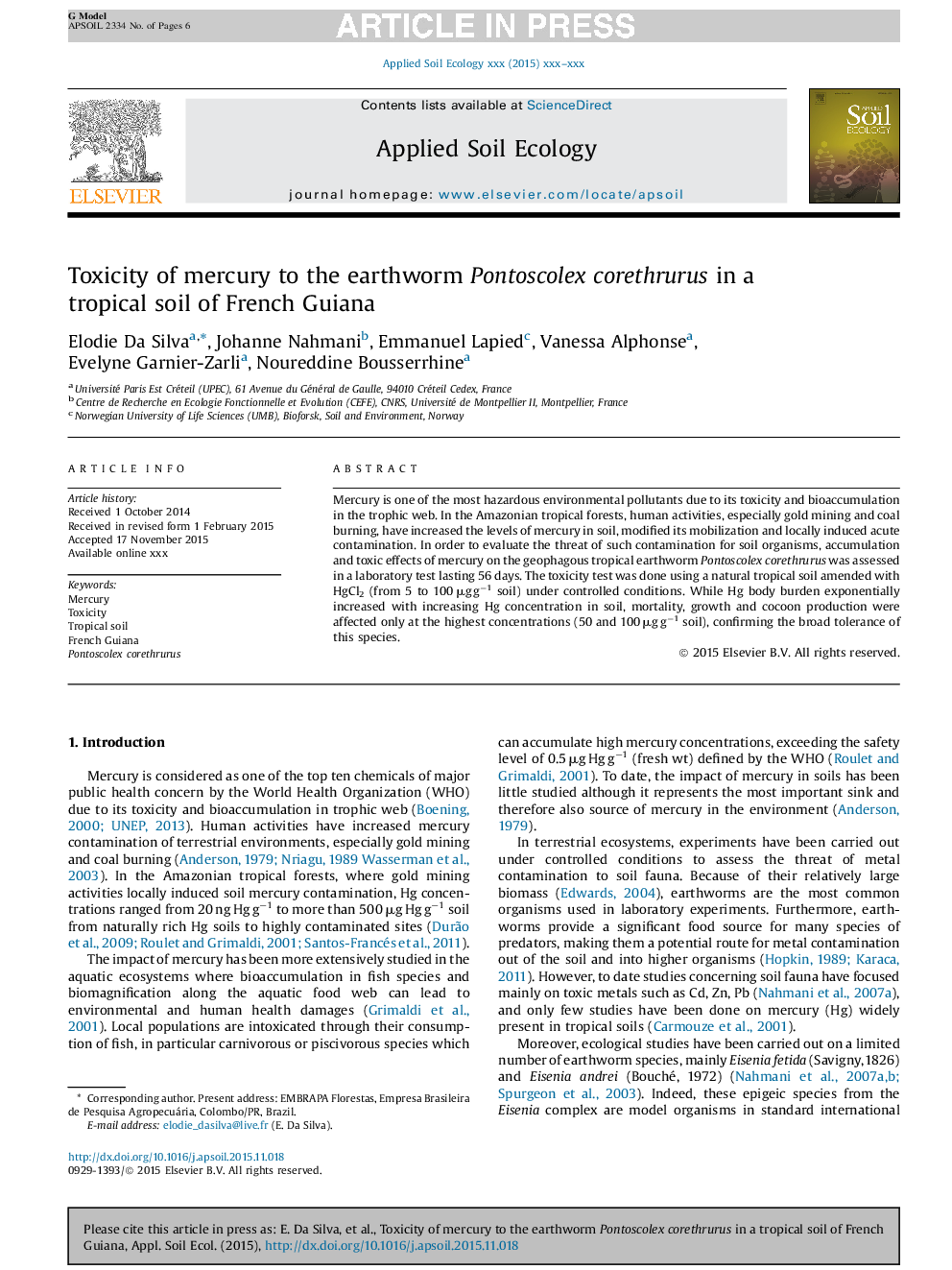| Article ID | Journal | Published Year | Pages | File Type |
|---|---|---|---|---|
| 6297538 | Applied Soil Ecology | 2016 | 6 Pages |
Abstract
Mercury is one of the most hazardous environmental pollutants due to its toxicity and bioaccumulation in the trophic web. In the Amazonian tropical forests, human activities, especially gold mining and coal burning, have increased the levels of mercury in soil, modified its mobilization and locally induced acute contamination. In order to evaluate the threat of such contamination for soil organisms, accumulation and toxic effects of mercury on the geophagous tropical earthworm Pontoscolex corethrurus was assessed in a laboratory test lasting 56 days. The toxicity test was done using a natural tropical soil amended with HgCl2 (from 5 to 100 μg gâ1 soil) under controlled conditions. While Hg body burden exponentially increased with increasing Hg concentration in soil, mortality, growth and cocoon production were affected only at the highest concentrations (50 and 100 μg gâ1 soil), confirming the broad tolerance of this species.
Related Topics
Life Sciences
Agricultural and Biological Sciences
Ecology, Evolution, Behavior and Systematics
Authors
Elodie Da Silva, Johanne Nahmani, Emmanuel Lapied, Vanessa Alphonse, Evelyne Garnier-Zarli, Noureddine Bousserrhine,
